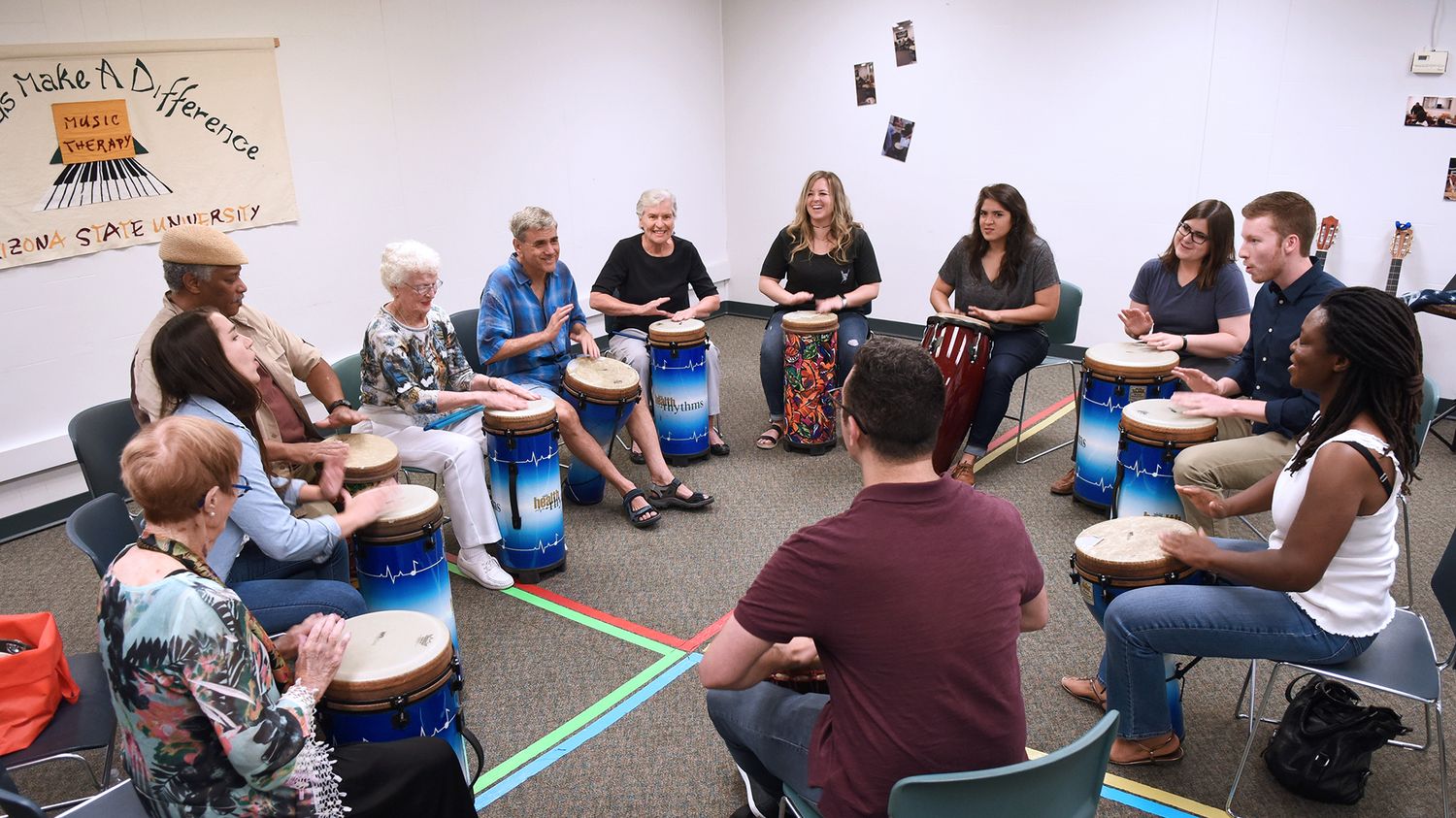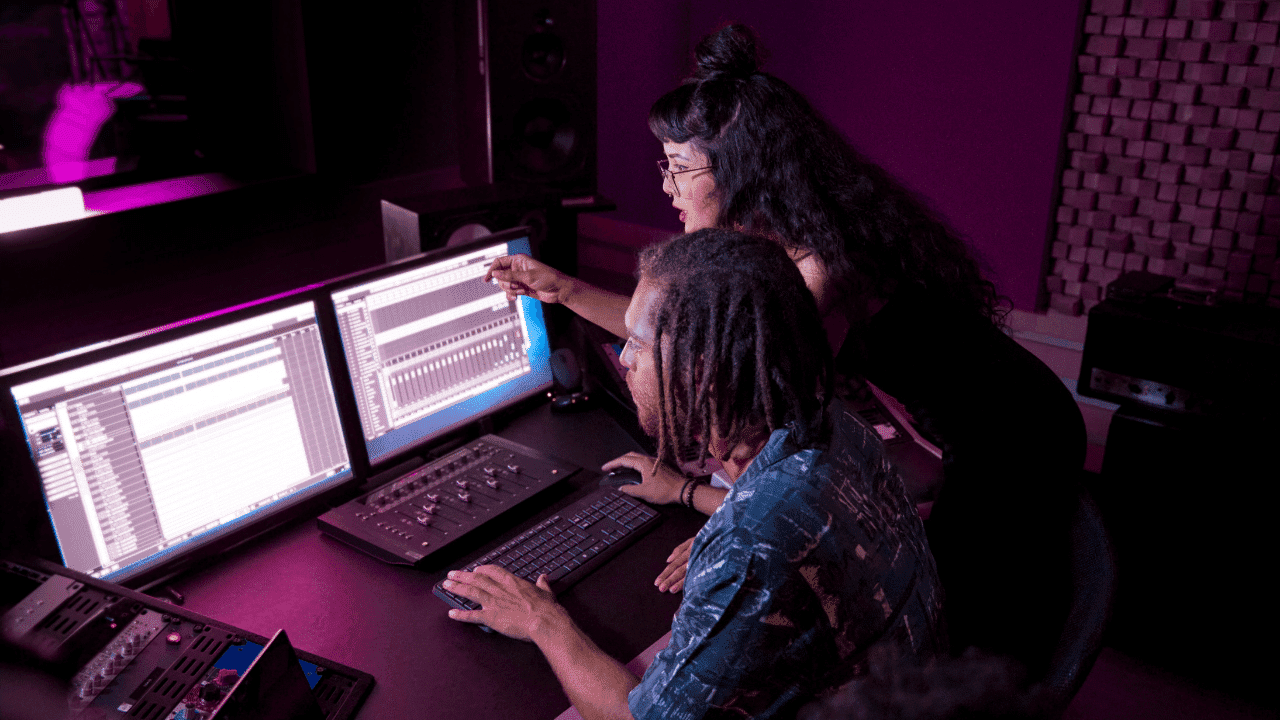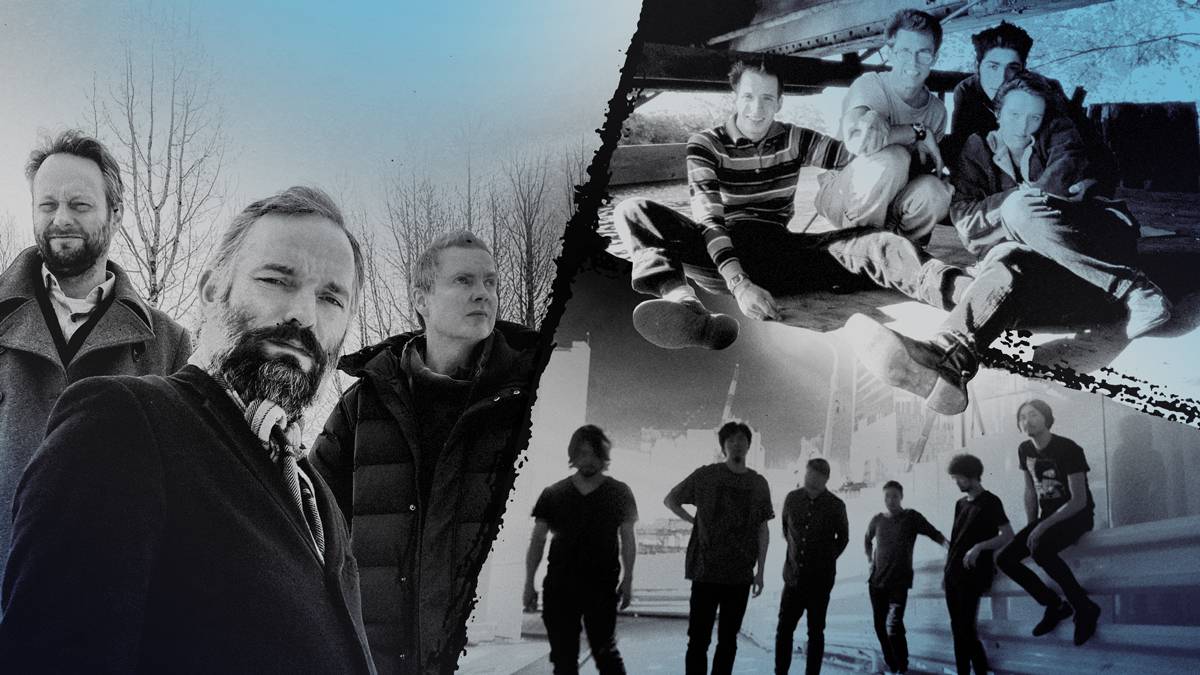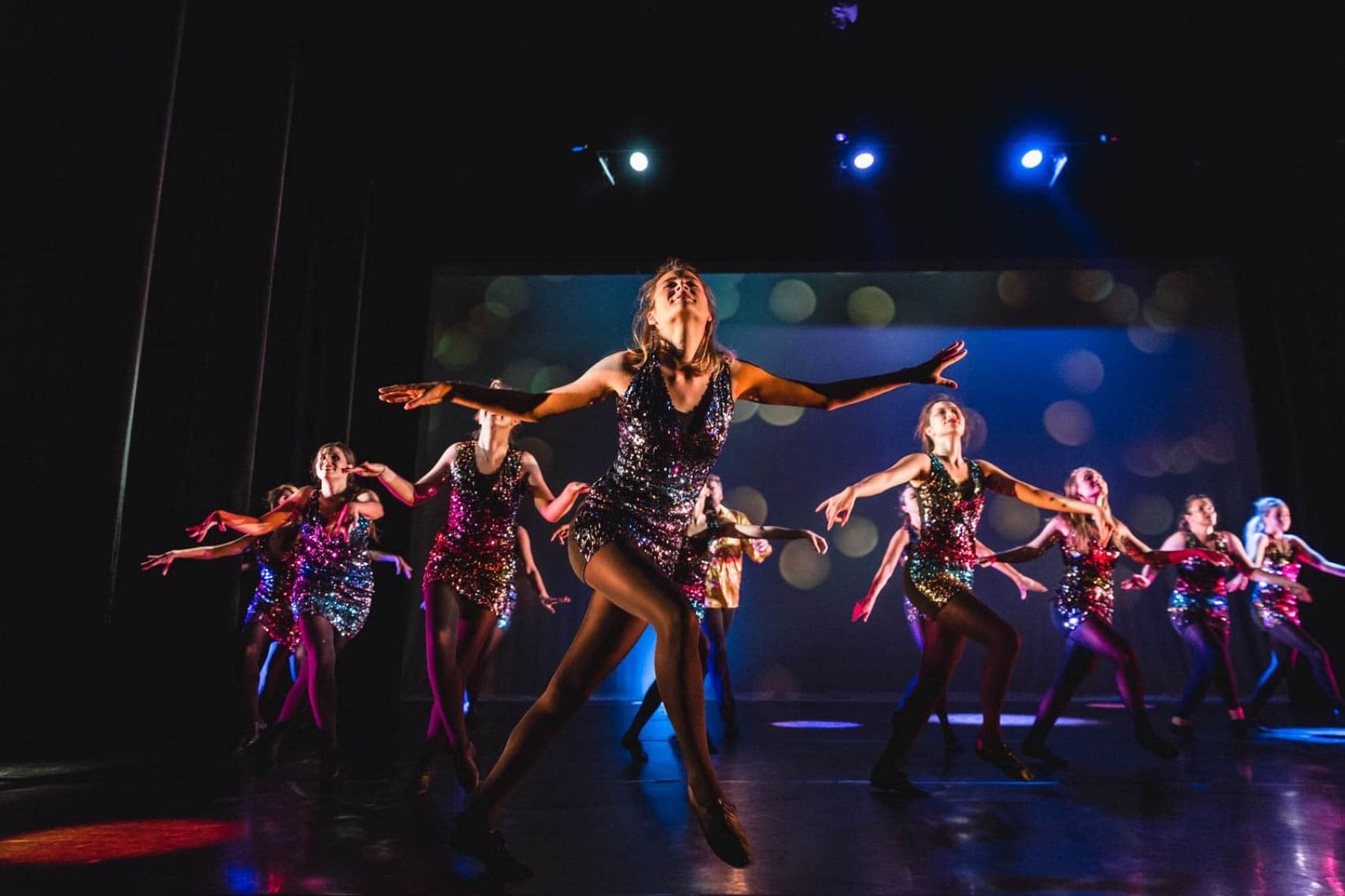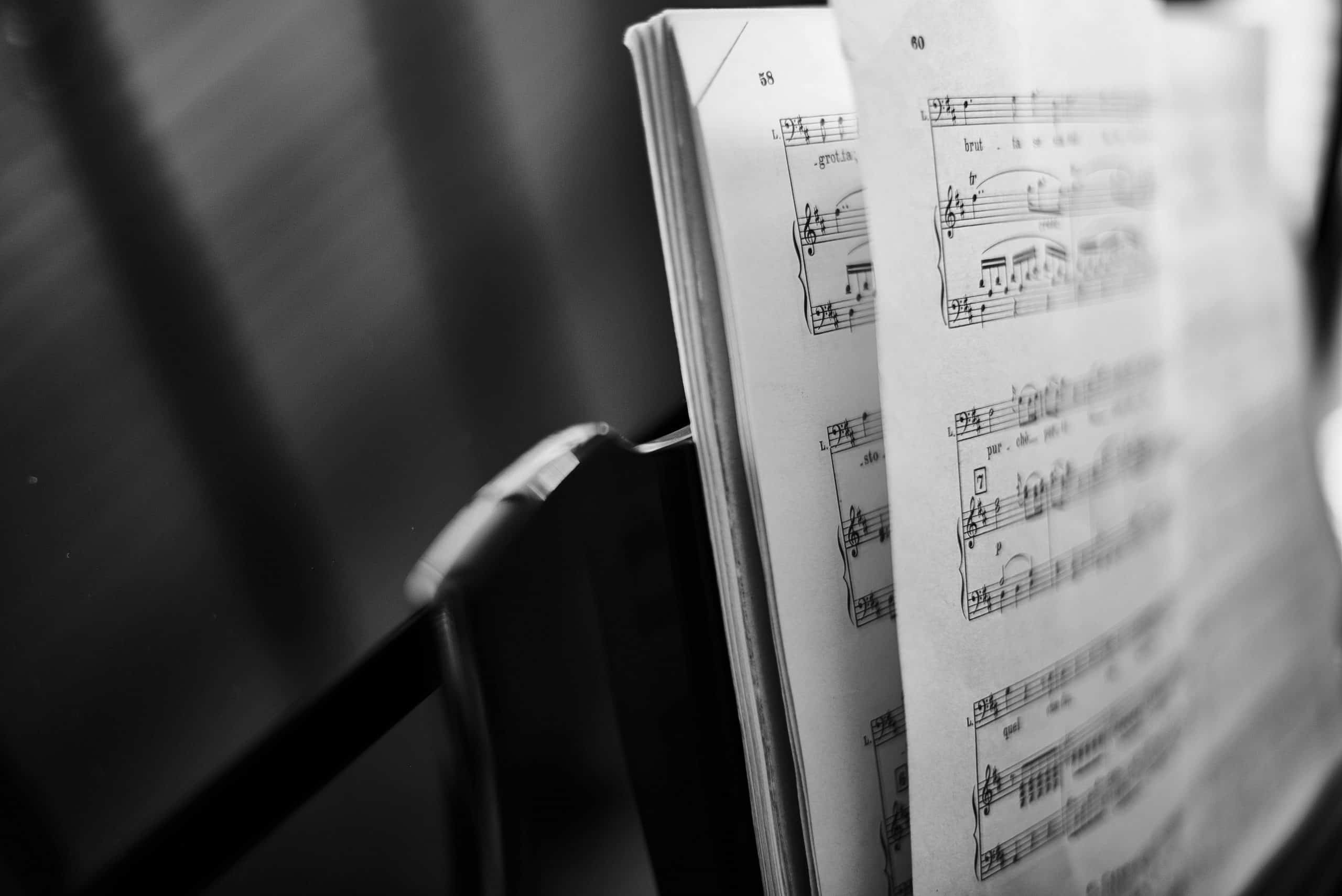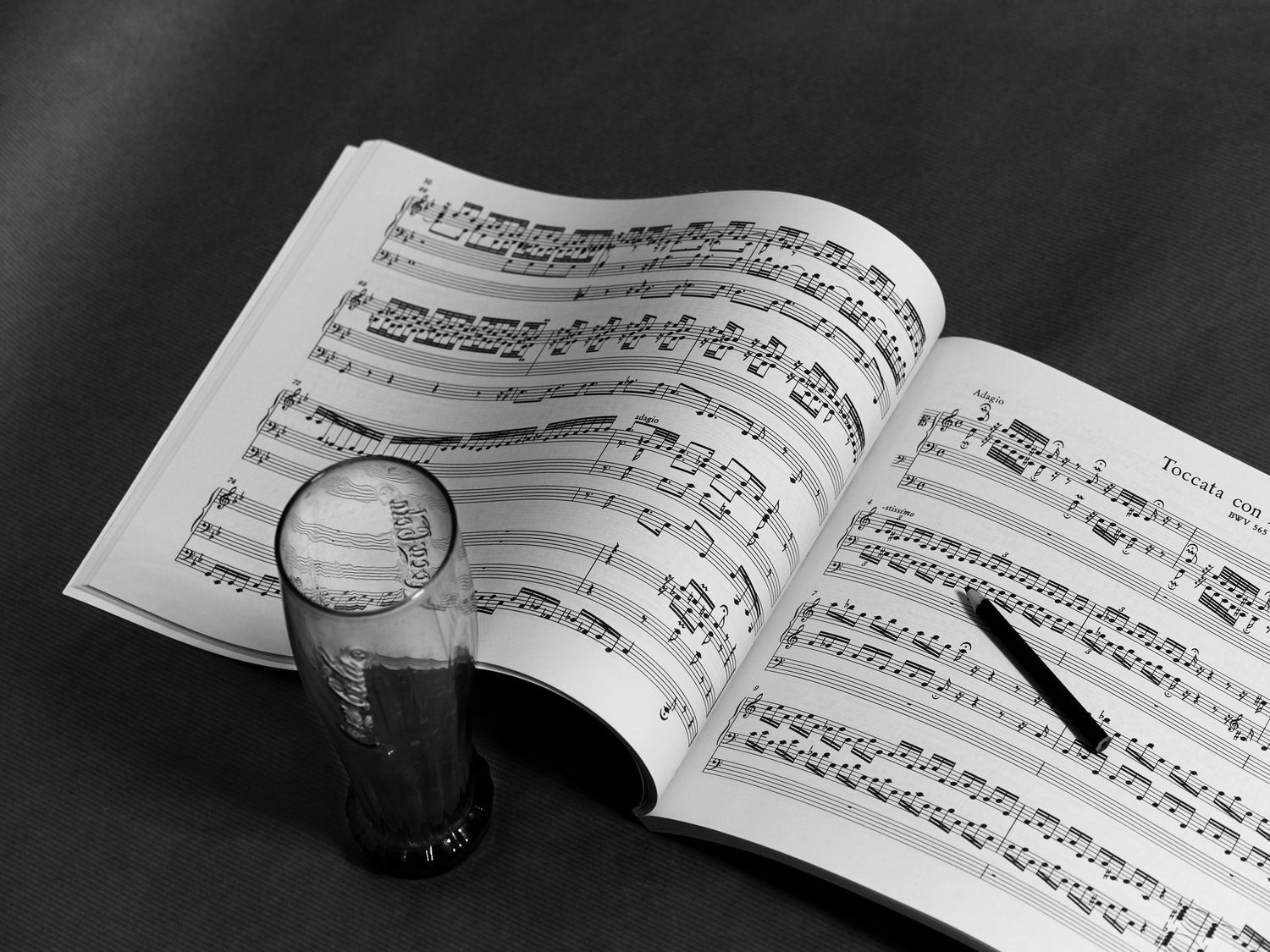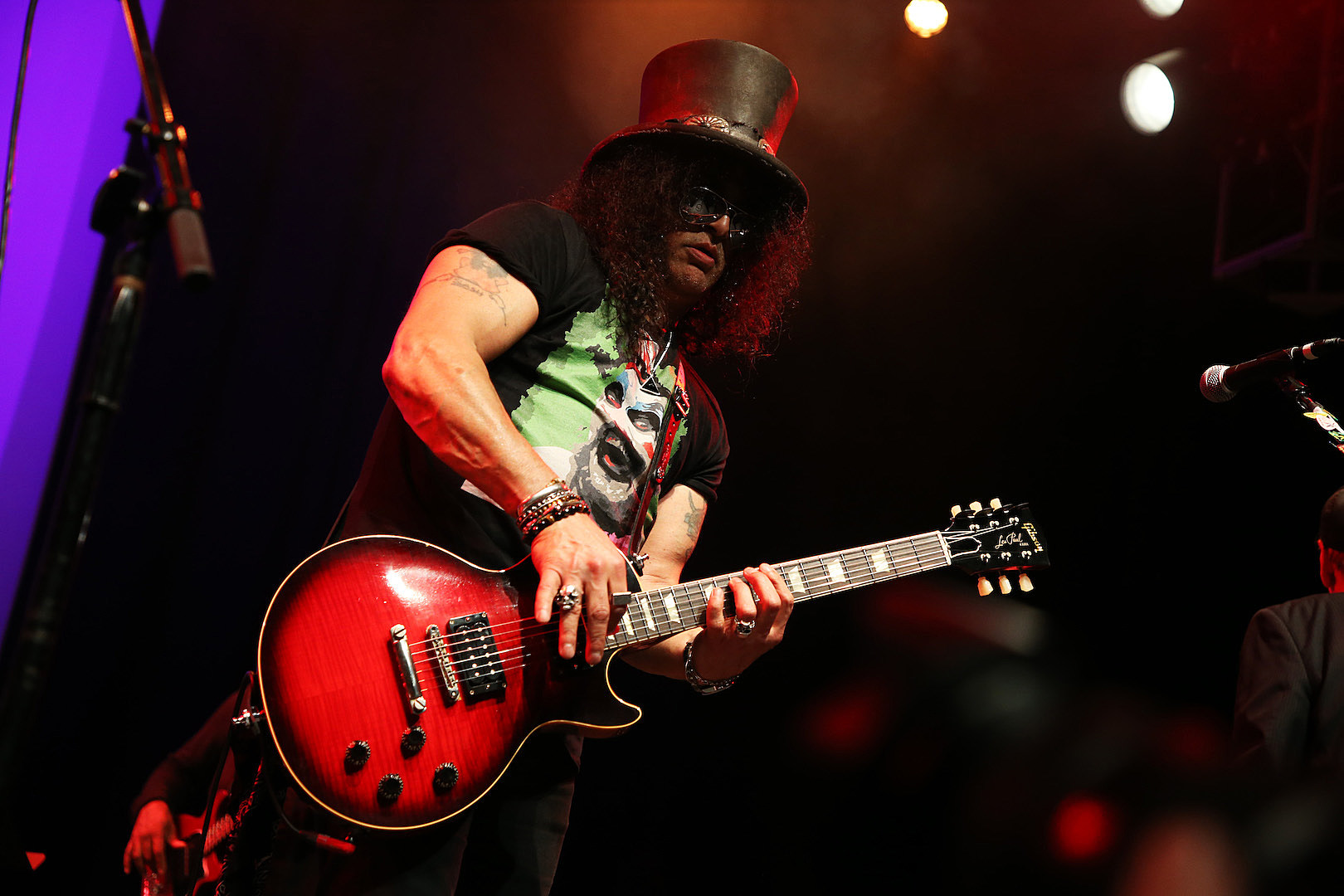

Rock
How Do You Dance To Rock Music
Modified: February 15, 2024
Learn how to dance to the energetic beats of rock music with our step-by-step guide. Discover the best moves and techniques to rock out on the dance floor.
(Many of the links in this article redirect to a specific reviewed product. Your purchase of these products through affiliate links helps to generate commission for AudioLover.com, at no extra cost. Learn more)
Table of Contents
Introduction
Rock music has been captivating listeners for decades with its powerful riffs, energetic beats, and raw emotions. It’s not just a genre of music; it’s a cultural movement that has inspired millions of people around the world. But rock music isn’t just meant to be listened to; it’s also meant to be felt and expressed through movement. That’s where rock dancing comes in.
Rock dancing is a dynamic and exhilarating way to immerse yourself in the music and let your body respond to its rhythm and energy. Whether you’re at a live concert, in the privacy of your own room, or in a social gathering, rock dancing allows you to connect with the music on a whole new level. It’s a form of self-expression and release that can be enjoyed by people of all ages and skill levels.
In this article, we will delve into the world of rock dancing and explore its various styles and techniques. From headbanging to air guitar, fist pumping to moshing, and even partner dancing, there are countless ways to let loose and groove to the powerful sounds of rock music. We’ll also take a look at how rock dance styles have evolved across different eras, from the classic moves of the 70s and 80s to the more contemporary styles of today.
So, if you’ve ever wondered how to dance to rock music or simply want to learn some new moves to enhance your rock music experience, this article is for you. Get ready to unleash your inner rockstar and embark on a rhythmic journey that will make you feel alive and connected to the timeless power of rock music.
Understanding Rock Music
Before diving into the world of rock dancing, it’s important to have a solid understanding of rock music itself. Rock music originated in the 1950s as a fusion of various genres, including blues, jazz, and gospel. With its signature electric guitar sound, strong drums, and passionate vocals, rock music quickly became a cultural phenomenon and a voice for rebellion and self-expression.
Rock music is known for its high energy, catchy melodies, and powerful lyrics that often touch on themes of love, freedom, and social commentary. It has evolved over the years to encompass various sub-genres, such as classic rock, punk rock, heavy metal, and alternative rock, each with its own unique sound and style.
One of the defining characteristics of rock music is its emphasis on live performances. Many rock bands are known for their electrifying stage presence and their ability to captivate audiences with their raw talent and energy. This live element is what makes rock music so well-suited for dancing.
Rock music often features a strong and steady beat that lends itself well to rhythmic movement. The guitar riffs and drum fills provide a driving force that can ignite the dancefloor and inspire spontaneous bursts of movement. Whether it’s an uptempo rock anthem or a soulful ballad, rock music has the power to evoke a range of emotions and compel people to express themselves through dance.
As you embark on your rock dancing journey, keep in mind that there are no strict rules or guidelines. Rock dancing is all about embracing the music and letting your body respond naturally. So, let go of any inhibitions, feel the music in your bones, and get ready to unleash your inner rockstar on the dancefloor.
Basic Rock Dance Moves
When it comes to rock dancing, there are a few basic moves that every enthusiast should familiarize themselves with. These moves serve as the foundation for more complex and intricate rock dance styles. So, let’s take a look at some of these essential rock dance moves:
- Headbanging: Arguably the most iconic rock dance move, headbanging involves vigorously shaking your head in time with the music. This move is often accompanied by pumping fists, and it’s a great way to let loose and embrace the heavy energy of rock music.
- Air Guitar: Get your imaginary guitar ready and unleash your inner rock god with the air guitar move. Mimic the motions of playing a guitar, strumming the strings and rocking out to the music. This move allows you to express your passion for rock music and create your own solos.
- Fist Pumping: As the name suggests, this move involves pumping your fists in the air in time with the music. It’s a simple yet powerful gesture that can add an extra burst of energy to your rock dancing. Feel the rhythm and let your fists soar through the air.
- Jumping and Moshing: For those looking for an adrenaline rush, jumping and moshing are popular rock dance moves. Jumping involves leaping in the air with the music, while moshing involves joining a group of like-minded individuals in a lively, energetic dance style often seen in rock concerts.
These basic rock dance moves are just the tip of the iceberg. As you become more comfortable with these moves, feel free to experiment and create your own unique style. Remember, rock dancing is all about letting go and allowing the music to guide your movements. So, embrace the energy, unleash your creativity, and rock the dancefloor like never before.
Headbanging
When it comes to rock dancing, one move that immediately comes to mind is headbanging. Headbanging is a rhythmic and intense movement where you vigorously shake your head in time with the music. It’s a physical expression of the energy and raw power that rock music embodies.
Headbanging has become an iconic symbol of rock and metal music, often associated with genres like heavy metal and hard rock. The origins of headbanging can be traced back to the 1950s and 1960s, with bands like The Beatles and The Who incorporating head movements into their performances. However, it was in the 1970s and 1980s that headbanging gained prominence and became synonymous with rock music.
There are a few different techniques for headbanging, but the most common approach is to bend your neck forward and then snap it back, allowing your hair (if you have long hair) to whip around in sync with the music. The speed and intensity of your headbanging can vary depending on the tempo and energy of the song. Slower, heavier songs often call for a more deliberate and powerful headbanging motion, while faster songs may inspire a more rapid and frantic movement.
It’s important to keep in mind that headbanging can be physically demanding and may cause strain or injury if done improperly. Take breaks and listen to your body to avoid any discomfort. If you’re new to headbanging, start with slower tempos and gradually build up your speed and stamina.
Headbanging is not only an individual expression but is also a communal experience at live rock concerts. When a crowd of headbangers comes together, there’s an incredible sense of unity and shared energy. The synchronized movement of a sea of enthusiasts headbanging in unison creates an electrifying atmosphere and adds to the overall concert experience.
So, next time you find yourself immersed in the electrifying sounds of rock music, let your head loose and embrace the headbanging movement. Feel the music pulsate through your veins as you unleash your inner rocker and become one with the rhythm.
Air Guitar
One of the most fun and entertaining rock dance moves is the air guitar. When you hear that killer guitar solo or infectious riff, it’s hard not to feel the urge to pick up an imaginary guitar and rock out. Air guitar allows you to do just that, unleashing your inner rockstar and creating your own musical masterpiece.
The concept of air guitar is simple – you mimic the motions of playing a guitar without actually having an instrument in your hands. It’s a playful and expressive way to engage with the music and add your personal touch to the performance. Air guitar is all about channeling your passion for rock music and letting your imagination run wild.
The beauty of air guitar is that there are no limits or rules. You can strum the strings, shred a solo, or even perform power chords – the choice is yours. You can mimic your favorite guitarists, recreate iconic rock moments, or invent your own electrifying guitar wizardry. The key is to feel the music and let your body respond naturally to its rhythm.
Air guitar can be a solo performance or a group activity. In fact, there are even air guitar competitions held around the world, where participants showcase their air guitar skills and vie for the title of the best air guitarist. These competitions highlight the creativity, passion, and pure enjoyment that air guitar brings to rock enthusiasts.
To get started with air guitar, all you need is a great rock song, a little bit of imagination, and the willingness to let go of inhibitions. Play the air guitar with conviction, emulating the movements and techniques of real guitarists. Let your fingers race up and down the fretboard, strum at different speeds, and bend those imaginary strings to your will.
Air guitar is not just about physical movement; it’s about connecting with the music and expressing your love for rock in a unique and entertaining way. So the next time your favorite rock song comes on, don’t hesitate to grab that invisible guitar and let the music guide your fingers on an epic air guitar journey.
Fist Pumping
When it comes to demonstrating your enthusiasm and energy for rock music, there’s nothing quite like the iconic move known as fist pumping. This simple yet powerful gesture involves pumping your fists in the air in time with the music, allowing you to physically express your excitement and connection to the rhythm.
Fist pumping is a universal gesture that transcends language and cultural barriers. It’s a way to show your appreciation for the music and connect with others who share your love for rock. Whether you’re at a live concert, rocking out in your bedroom, or surrounded by fellow rock enthusiasts, fist pumping is a symbol of unity and celebration of the music.
The motion of fist pumping is quite straightforward. Simply make a fist with one or both hands, and then raise and lower your fists in rhythm with the music. The intensity and speed of the pumping can vary depending on the energy of the song. Fast and energetic tracks may inspire quick and vigorous pumping, while slower and more melodic songs may call for a more deliberate and controlled movement.
Fist pumping can be done in various contexts – from a solo act of personal expression to a group activity where everyone joins in unison. In a concert setting, seeing a sea of raised fists pumping in sync creates an exhilarating atmosphere and fuels the excitement of the performance. It’s a visual representation of the shared enthusiasm and connection between the audience and the artist.
One of the great things about fist pumping is its versatility. It can be incorporated into other rock dance moves, such as headbanging or air guitar, amplifying the energy and adding a dynamic element to your performance. By combining fist pumping with other dance moves, you can create a personalized and engaging rock dance routine that showcases your passion and enjoyment of the music.
So, the next time you find yourself immersed in the irresistible beats of a rock song, don’t be afraid to let your fists fly. Pump them in the air, feel the music in your veins, and join in the celebration of rock music with this universal symbol of excitement and unity.
Jumping and Moshing
For those seeking an adrenaline rush and a more physical form of rock dancing, jumping and moshing are two popular and exhilarating moves. These energetic dance styles are often seen at rock concerts and can be a thrilling way to connect with the music and the crowd.
Jumping is exactly what it sounds like – leaping into the air in sync with the music. It’s a way to channel the energy and excitement of the music through your entire body. Jumping can be done with both feet leaving the ground simultaneously or with one foot leading the way. The height and intensity of your jumps can vary depending on the tempo and energy of the song, allowing you to punctuate the music with powerful bursts of movement.
Moshing, on the other hand, is a more intense and communal style of dancing that involves a group of like-minded individuals coming together in a lively and often chaotic manner. Participants in a mosh pit form a circle or a designated area and engage in aggressive body movements, pushing, shoving, and colliding with one another in rhythm with the music. It’s an expression of collective energy and a way to release pent-up emotions in a controlled and exhilarating environment.
While jumping and moshing can be immensely fun and liberating, it’s important to prioritize safety and respect for others. If you’re planning to participate in a mosh pit, be aware of your surroundings and the people around you. Look out for one another and be respectful of personal boundaries. Moshing is a physical activity, so it’s always a good idea to warm up and stretch beforehand to prevent injuries.
Jumping and moshing are not only physical expressions but also communal experiences. When a crowd of rock enthusiasts comes together to jump or mosh, there’s an unspoken connection and shared excitement. It’s a way to feel united with fellow music lovers, as everyone feeds off the energy of the music and the collective movement.
Whether you prefer the soaring sensation of jumping or the raw intensity of moshing, these rock dance styles offer a unique way to immerse yourself in the music and connect with the energy of a live performance. So, next time you find yourself in the midst of a high-energy rock song, let yourself go and experience the thrill of jumping or join in the kinetic energy of a mosh pit.
Partner Dancing
While rock dancing is often associated with individual expression and energetic movements, there is also a place for partner dancing in the world of rock music. Partner dancing adds a new dimension to the rock dance experience, allowing you to connect with a dance partner and synchronize your movements to the rhythm of the music.
Partner dancing can take various forms within the rock genre, depending on the style and preferences of the dancers. One popular style of partner dancing in rock music is the classic “swing” or “jive.” This style incorporates energetic footwork, spins, and lifts, reminiscent of the lively dances seen in the 1950s and 1960s. The fast-paced nature of swing dancing perfectly complements the upbeat tempos and infectious energy of rock music.
Another style of partner dancing that can be seen in rock music is the “slow dance” or “ballroom hold.” This relaxed and intimate style allows you to sway and move gracefully with your partner, feeling the emotion and melodic nuances of slower rock songs. It’s a chance to connect on a deeper level and express the more soulful side of rock music.
Partner dancing in rock music can be a fun and engaging activity to do with a friend, a significant other, or even a dance partner you’ve met at a social gathering or dance event. It’s a way to form a connection with someone through the shared love for rock music and the joy of dancing.
It’s important to remember that partner dancing requires effective communication and cooperation between dance partners. Each partner must be attentive to the other’s movements, following the lead and responding to cues. It’s a collaborative effort that allows you to create a seamless and harmonious dance experience.
Partner dancing in rock music provides a unique opportunity for self-expression and connection with others through dance. So, if you’re looking to explore a different aspect of rock dancing and want to share the magic of dance with a partner, give partner dancing a try. Let the music guide your steps as you embark on a rhythmic journey together.
Rock Dance Styles across Different Eras
As rock music has evolved over the years, so too have the dance styles associated with it. Different eras in rock history have brought forth unique dance movements that reflect the spirit and cultural trends of their time. Let’s explore some of the rock dance styles across different eras:
1950s and 1960s: In the early days of rock and roll, the dances were often more conservative and focused on partner dancing. The jitterbug, twist, and hand jive were popular dance styles, characterized by energetic movements, spins, and coordinated footwork. These dances captured the exuberance and youthful energy of rock and roll’s early days.
1970s and 1980s: With the emergence of harder and more aggressive rock genres like punk rock and heavy metal, new dance styles began to take shape. Headbanging became a signature move during this era, with rock enthusiasts vigorously shaking their heads in sync with the music’s intense beat. Additionally, wild and energetic movements, such as pogoing and stage diving, became common at live rock shows.
1990s: The 90s saw the rise of alternative rock and grunge, which brought a more introspective and raw energy to rock music. The dance style associated with this era was often more subdued and focused on free-flowing movements. It was a time of individual expression and cathartic release, with body swaying, mellow head nodding, and random bursts of movement seen on dance floors.
2000s and Beyond: The turn of the millennium witnessed a fusion of various rock sub-genres, giving rise to a more diverse range of dance styles. From the energetic and acrobatic moves of pop-punk to the synchronized headbanging in nu-metal, each sub-genre brought its own unique dance culture. This era also saw the influence of electronic music in rock, with dance elements being incorporated into the performances of bands like The Killers and Franz Ferdinand.
Throughout the years, one constant in rock dancing is the spirit of rebellion and self-expression. Rock dance styles have mirrored the changing societal attitudes and cultural movements, capturing the essence of each era in their movements and energy.
It’s important to note that rock dance styles are not limited to any specific era and are constantly evolving. Today, you can find a multitude of dance styles in rock music, ranging from classic moves to contemporary and innovative expressions.
Regardless of the era or the specific dance style, rock dancing has always been about embracing the music’s power and connecting with it on a physical level. So, whether you’re rocking out to the classic tunes of the 50s or getting down to the sounds of modern rock, let the music move your body and express yourself through the dance of rock.
Conclusion
Rock dancing is a thrilling and dynamic way to fully immerse yourself in the power of rock music. Whether you’re headbanging, air guitaring, fist pumping, jumping, moshing, or engaging in partner dancing, there’s a rock dance style that suits your individuality and allows you to express the energy and passion that rock music evokes.
Throughout the years, rock dance styles have evolved alongside the changing landscape of rock music itself. From the classic dances of the 1950s and 1960s to the more rebellious and intense moves of the 1970s and 1980s, each era has contributed to the rich tapestry of rock dancing. Today, rock dance continues to evolve, reflecting the diverse range of sub-genres and musical influences in the modern rock scene.
Rock dancing is not just about the physical movements; it’s about connecting with the music and allowing it to ignite a fire within you. It’s about channeling emotions, expressing yourself, and experiencing the unity and excitement of rock music in a visceral and tangible way.
So, whether you’re in the middle of a pulsating mosh pit, lost in the intricate movements of partner dancing, or simply enjoying a wild air guitar solo in the privacy of your room, let the music guide your body and unleash your true rockstar spirit.
Remember, there are no strict rules or guidelines. Rock dancing is a unique and personal experience for everyone. So, let go of inhibitions, embrace the music, and allow yourself to be swept away by the powerful rhythms and melodies of rock. Whether you’re a seasoned rock dancing pro or just starting out, the joy and freedom of rock dancing await. So, get out there and rock on!

